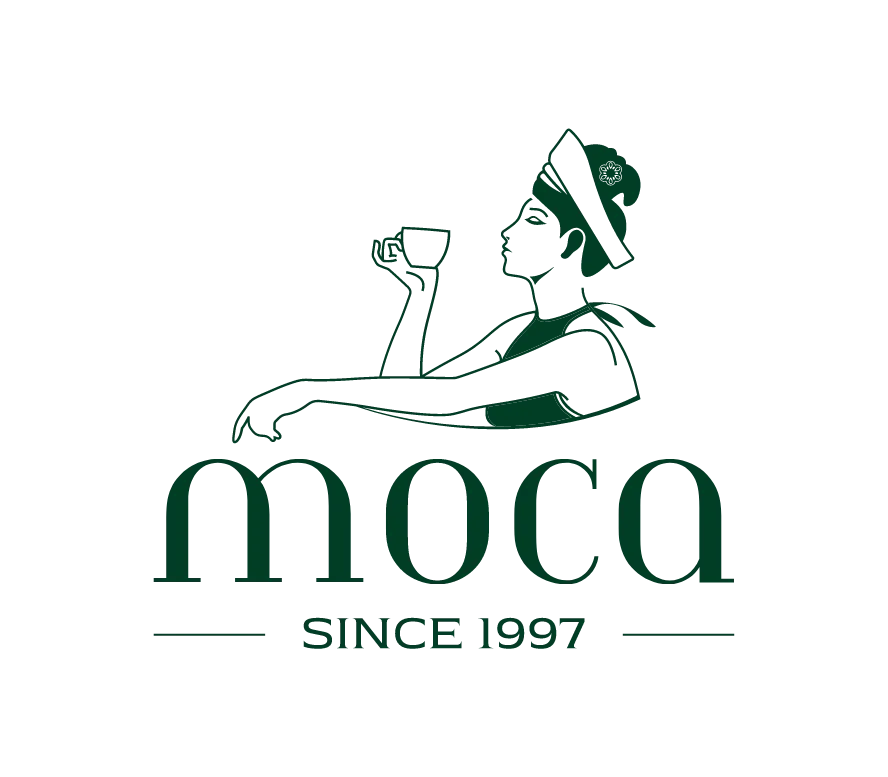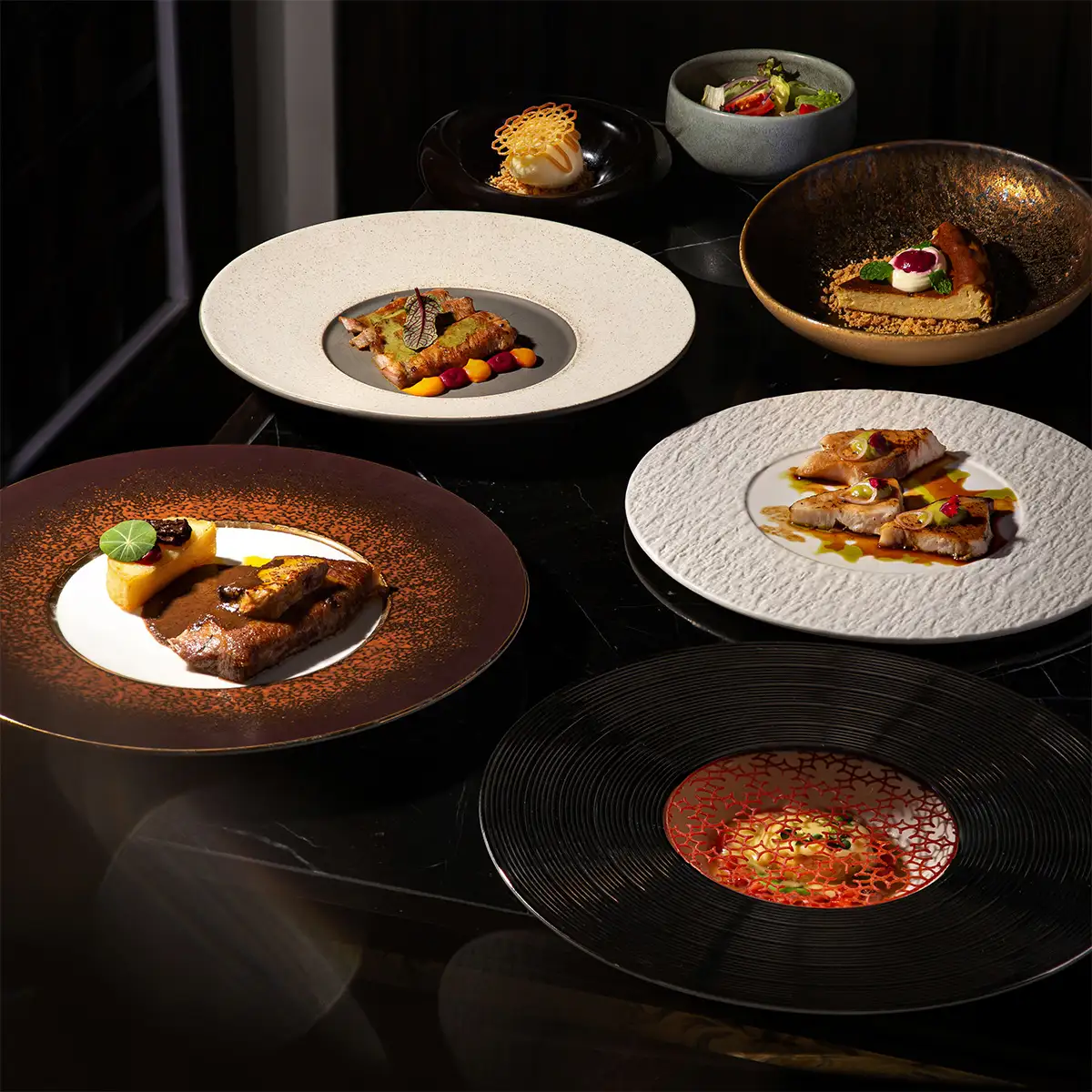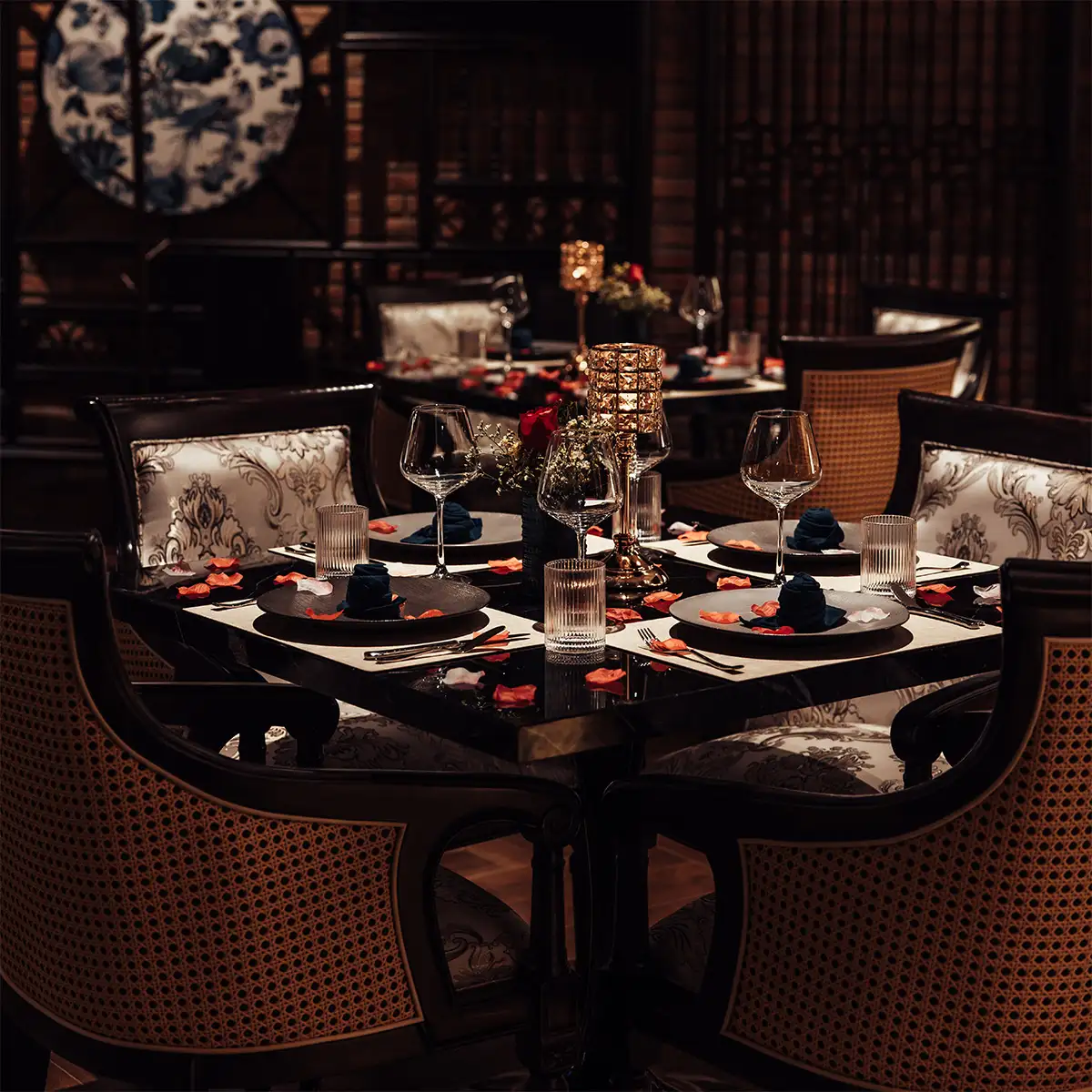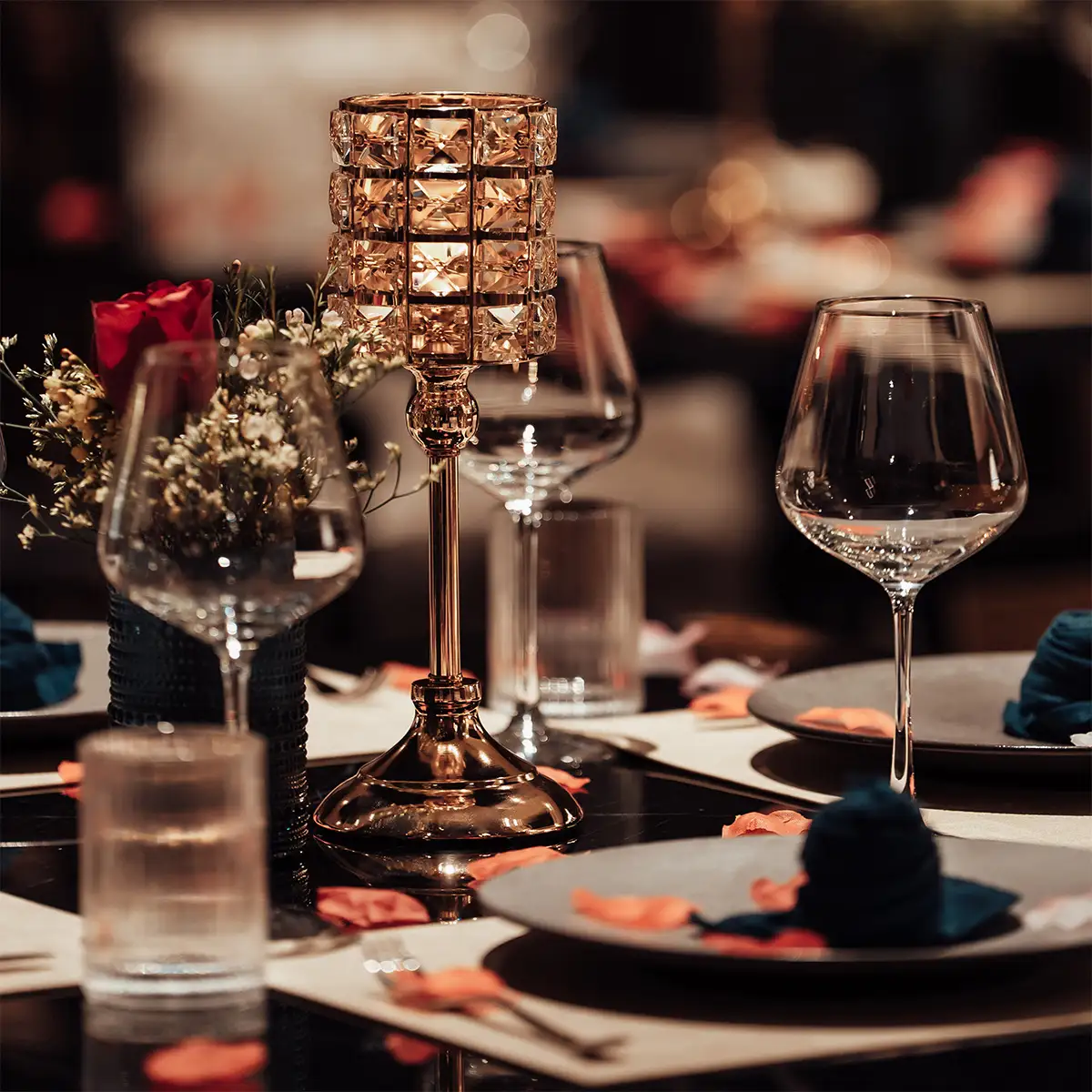- 1. The indispensable role of tablecloths in fine dining
- 1.1. Enhancing aesthetic appeal and setting the tone
- 1.2. Improving the guest experience
- 1.3. Practical benefits and operational efficiency
- 2. Key considerations for selecting fine dining tablecloths
- 2.1. Material selection: Durability, feel, and functionality
- 2.2. Size and drop: Achieving the perfect fit and formality
- 2.3. Color and style: Harmonizing with restaurant aesthetics
- 3. Care and maintenance of fine dining tablecloths
In the world of fine dining, the experience transcends cuisine; it is an art form where every detail contributes to the overall ambiance. While the chef's creations are the star, the stage upon which they are presented is set long before the first plate arrives. This stage is founded on an often-underestimated element: the tablecloth. More than mere fabric, the right tablecloth is the silent foundation of an exceptional meal. This guide will explore the strategic importance and practical considerations of fine dining tablecloths, demonstrating why they are an indispensable asset for any premier establishment.
1. The indispensable role of tablecloths in fine dining
The decision to use tablecloths for fine dining restaurants is not merely a stylistic choice but a strategic one that profoundly impacts aesthetics, guest perception, and operational efficiency.
1.1. Enhancing aesthetic appeal and setting the tone
A pristine, high-quality tablecloth is the canvas for the culinary experience. It creates a luxurious atmosphere, instantly signaling a commitment to elegance and sophistication that complements the interior decor. This consistent presentation ensures a polished and refined look that not only meets but exceeds guest expectations. Furthermore, the choice of fabric, color, and drape becomes a subtle yet powerful extension of the restaurant's brand identity, reflecting a dedication to excellence in every facet of the service.
1.2. Improving the guest experience
The guest's interaction with the table begins with touch. The luxurious, tactile sensation of a high-quality linen or cotton blend immediately conveys quality. This initial perception is critical. Research consistently validates the impact of table coverings on diner perception. For instance, studies conducted by industry leaders like Milliken & Company have shown that a vast majority of diners feel a clothed table signifies a better restaurant and enhances their overall experience. Many guests associate fine dining tablecloths with superior food, elevated service, and a more memorable occasion.
Beyond the visual and tactile, there is a significant acoustic benefit. In a bustling environment, thicker fabrics absorb ambient sound, dampening the clatter of cutlery and glassware. This noise reduction fosters a more intimate and conversation-friendly atmosphere, which is a hallmark of the fine dining environment.
1.3. Practical benefits and operational efficiency
From an operational standpoint, tablecloths are a vital tool. They provide essential protection for expensive table surfaces, safeguarding them from the inevitable spills, heat marks, and scratches that occur during service. This preserves the longevity of significant furniture investments.
Hygiene is another paramount concern. A professionally laundered tablecloth provides a certifiably clean surface for every new guest, a practice that is often perceived as more sanitary than wiping down a bare table. Finally, for establishments with older or less pristine furniture, a tablecloth offers a perfect solution, elegantly concealing any imperfections and ensuring a flawless presentation every time.
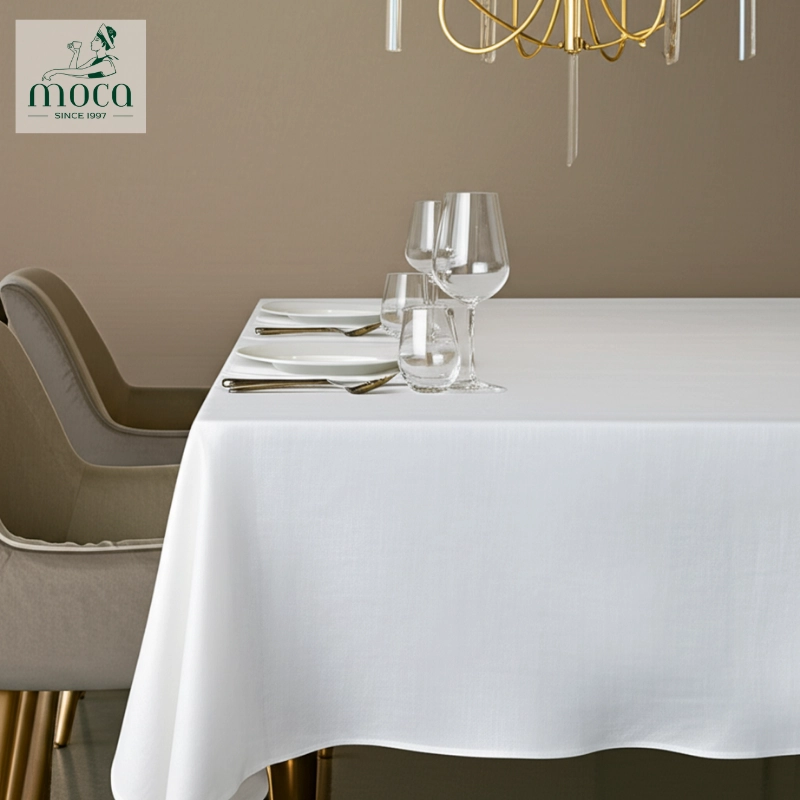
A refined tablecloth does more than beautify—it softens sound, enhances cleanliness, and evokes a sense of understated luxury.
Learn more: The Digital Palate: Navigating the Influence of Fine Dining Blogs
2. Key considerations for selecting fine dining tablecloths
Choosing the correct linens requires a careful balance of aesthetics, functionality, and durability. The material, size, and style must work in harmony to achieve the desired effect.
2.1. Material selection: Durability, feel, and functionality
The selection of fine dining tablecloth materials is a critical decision with long-term implications.
- Cotton: A classic and revered choice, cotton offers a natural, soft feel and excellent absorbency. Its crisp, elegant appearance is undeniable, though it is prone to wrinkling and requires meticulous care.
- Linen: Considered the pinnacle of luxury, linen possesses a unique, rich texture and exceptional durability. Its timeless sophistication makes it a frequent choice for the most formal occasions, though it comes at a premium price and demands professional maintenance.
- Polyester and blends: Modern hospitality has embraced high-quality polyester and poly-cotton blends for their outstanding practicality. These fabrics offer superior durability, stain resistance, and wrinkle resistance, significantly simplifying maintenance.
- Recent advancements in fabric technology: The textile industry has made remarkable strides, producing performance fabrics designed for the rigors of commercial use. Innovations include advanced stain-release technologies that allow even stubborn substances like wine and oil to wash out completely. Furthermore, there is a growing trend towards eco-friendly options, such as linens made from recycled polyester (rPET), which offer the same performance benefits while supporting sustainability initiatives.
2.2. Size and drop: Achieving the perfect fit and formality
The "drop" of a tablecloth—the length of fabric that hangs over the edge of the table—dictates the formality of the setting.
- Formal vs. casual drops: For a standard fine dining setting, a drop of 12-15 inches (30-38 cm) is considered appropriate. This length is elegant without interfering with the guest's comfort. For banquets, weddings, or exceptionally formal events, a floor-length drop of 29-30 inches (74-76 cm) provides a dramatic and stately appearance.
- Measuring guide: To ensure a perfect fit, measure the table's dimensions (length and width for rectangular/square, or diameter for round) and add twice the desired drop. For example, for a 72-inch round table with a desired 15-inch drop, the calculation would be 72 + (15 x 2) = 102 inches. A 102-inch round tablecloth is required.
2.3. Color and style: Harmonizing with restaurant aesthetics
While classic white and ivory remain timeless choices for their versatility and elegance, allowing the food and decor to be the focus, strategic color choices can powerfully reinforce a brand's identity. Deeper hues or subtle, tasteful patterns can complement a specific theme or interior design. For added visual interest and sophistication, consider layering fabrics, such as placing a richly textured table runner over a smooth base tablecloth, to create depth and a more dynamic tablescape.

The ideal tablecloth blends premium fabric, tailored drop, and design harmony—together setting the stage for an elevated dining experience.
Learn more: Mastering Culinary Artistry: Essential Fine Dining Cooking Tips for Aspiring Chefs
3. Care and maintenance of fine dining tablecloths
The longevity and pristine appearance of your linens depend entirely on a rigorous care and maintenance program.
- Daily handling and stain management: The most critical rule in linen care is prompt action. Spills must be addressed immediately to prevent stains from setting into the fabric fibers. Staff should be trained in basic spot treatment techniques, such as gently blotting a red wine spill rather than rubbing it.
- Washing and drying protocols: Most high-end establishments rely on professional commercial laundry services that are equipped to handle fine dining tablecloths. These services use precisely calibrated, commercial-grade detergents and high-temperature wash cycles to ensure sanitation and optimal stain removal. For in-house laundering, it is crucial to follow fabric-specific protocols: use warm water for whites and cold for colors with a mild detergent, and always avoid chlorine bleach and fabric softeners, which can damage fibers and reduce absorbency. Over-drying should also be avoided, as it can set wrinkles and weaken the fabric over time.
- Storage and longevity: Proper storage is essential for maintaining a ready supply of perfect linens. To prevent creasing, tablecloths should be rolled around a tube or hung rather than folded. A well-managed inventory system is key to ensuring longevity. For example, many leading hospitality groups, such as The Ritz-Carlton and Four Seasons, employ a "par level" system. A typical 3-par system ensures that for every tablecloth in use, there is one in the laundry and one clean in storage. This rotation guarantees even wear across the entire stock and prevents overuse of any single item, extending the life of the investment.
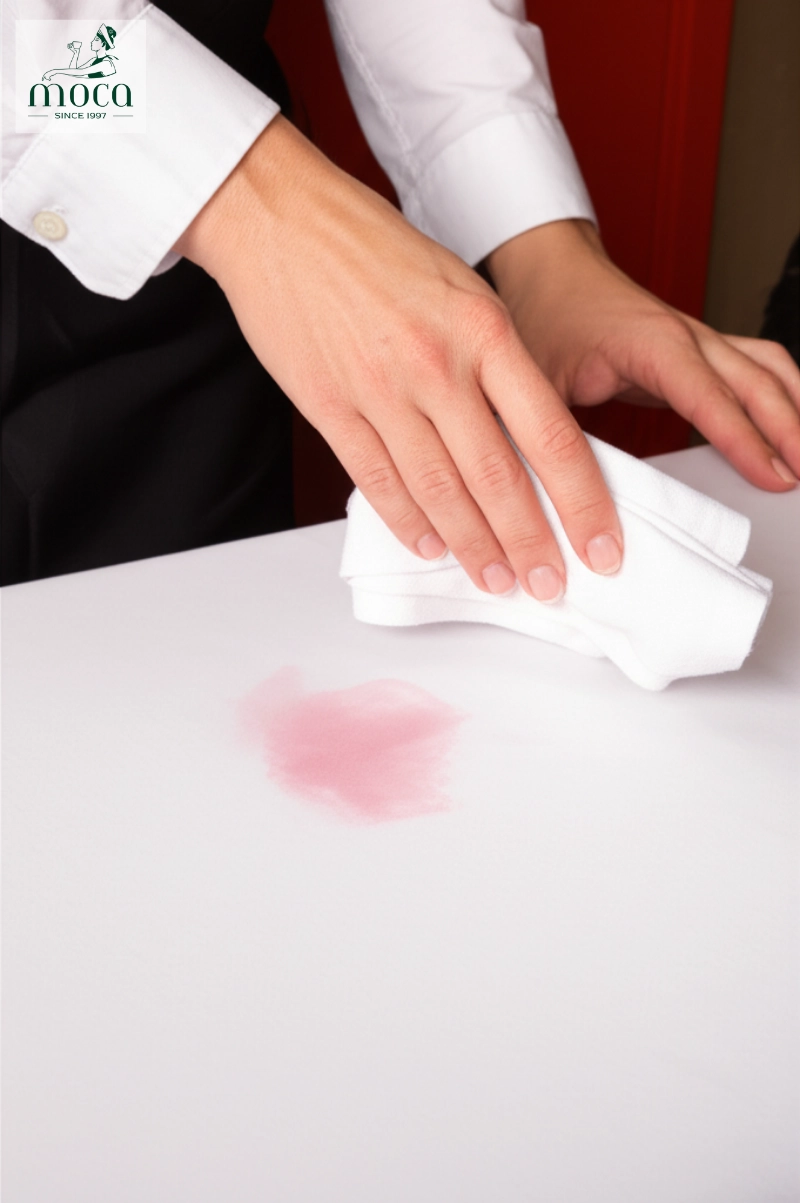
Proper care—from prompt stain removal to precise laundering and smart storage—is essential to preserving the elegance and lifespan of fine dining linens.
Ultimately, the value of fine dining tablecloths extends far beyond their function as a table covering. They are a fundamental component of the guest experience, a symbol of quality, and a practical tool for operational excellence. Investing in high-quality linens and their proper care is a direct investment in a restaurant's reputation and its ability to create an unforgettable culinary journey. To elevate your establishment's presentation, explore the exquisite selection of linens at Moca Dining—crafted to the highest standards and designed for the most discerning fine dining restaurants. Make your reservation to experience our commitment to elegance and quality firsthand.
